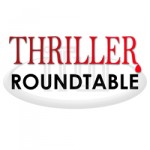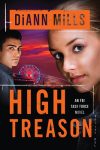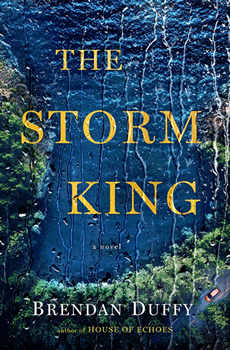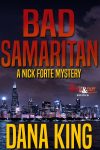

February 26 – March 4: “What can thriller writers learn from the film industry?”
 What can thriller writers learn from the film industry? That’s the question on tap this week. Join thriller authors and ITW Members Eric Beetner, Brendan Duffy, DiAnn Mills, Dana King and Arthur Kerns as they discuss everything film and thriller related! Scroll down to the ‘comments’ section; you won’t want to miss this one!
What can thriller writers learn from the film industry? That’s the question on tap this week. Join thriller authors and ITW Members Eric Beetner, Brendan Duffy, DiAnn Mills, Dana King and Arthur Kerns as they discuss everything film and thriller related! Scroll down to the ‘comments’ section; you won’t want to miss this one!
~~~~~
 Eric Beetner has been described as “the James Brown of crime fiction – the hardest working man in noir” (Crime Fiction Lover) and “The 21st Century’s answer to Jim Thompson” (LitReactor). He has written more than 20 novels, including Rumrunners, Leadfoot, The Devil Doesn’t Want Me, The Year I Died 7 Times and Criminal Economics. His award-winning short stories have appeared in over three dozen anthologies. He co-hosts the podcast Writer Types and the Noir at the Bar reading series in Los Angeles, where he lives and works as a television editor.
Eric Beetner has been described as “the James Brown of crime fiction – the hardest working man in noir” (Crime Fiction Lover) and “The 21st Century’s answer to Jim Thompson” (LitReactor). He has written more than 20 novels, including Rumrunners, Leadfoot, The Devil Doesn’t Want Me, The Year I Died 7 Times and Criminal Economics. His award-winning short stories have appeared in over three dozen anthologies. He co-hosts the podcast Writer Types and the Noir at the Bar reading series in Los Angeles, where he lives and works as a television editor.
 DiAnn Mills is a bestselling author who believes her readers should expect an adventure. She combines unforgettable characters with unpredictable plots to create action-packed, suspense-filled novels. Her titles have appeared on the CBA and ECPA bestseller lists; won two Christy Awards; and been finalists for the RITA, Daphne Du Maurier, Inspirational Readers’ Choice, and Carol award contests. Firewall, the first book in her Houston: FBI series, was listed by Library Journal as one of the best Christian Fiction books of 2014.
DiAnn Mills is a bestselling author who believes her readers should expect an adventure. She combines unforgettable characters with unpredictable plots to create action-packed, suspense-filled novels. Her titles have appeared on the CBA and ECPA bestseller lists; won two Christy Awards; and been finalists for the RITA, Daphne Du Maurier, Inspirational Readers’ Choice, and Carol award contests. Firewall, the first book in her Houston: FBI series, was listed by Library Journal as one of the best Christian Fiction books of 2014.
 Brendan Duffy is an editor and the author of The Storm King and House of Echoes. In 2015, he was featured in Refinery29’s “21 New Authors You Need to Know.” He lives in New York, where he is at work on his next novel.
Brendan Duffy is an editor and the author of The Storm King and House of Echoes. In 2015, he was featured in Refinery29’s “21 New Authors You Need to Know.” He lives in New York, where he is at work on his next novel.
 Dana King has published eleven novels, two of which (A Small Sacrifice and The Man in the Window) received Shamus Award nominations. The newest novel in that series, Bad Samaritan, was released on January 22 by Down & Out Books. His Penns River series of police procedurals includes three books, with a fourth (Ten-Seven) due in July from Down & Out.
Dana King has published eleven novels, two of which (A Small Sacrifice and The Man in the Window) received Shamus Award nominations. The newest novel in that series, Bad Samaritan, was released on January 22 by Down & Out Books. His Penns River series of police procedurals includes three books, with a fourth (Ten-Seven) due in July from Down & Out.
 In March 2013 Diversion Books Inc. released the acclaimed espionage thriller, The Riviera Contract followed by the sequel, The African Contract. The Yemen Contract was released in June 2016. Arthur Kerns joined the FBI with a career in counterintelligence and counterterrorism. On retirement, he became a consultant with a number of US agencies, including the Department of State. His lengthy assignments took him to over 65 countries.
In March 2013 Diversion Books Inc. released the acclaimed espionage thriller, The Riviera Contract followed by the sequel, The African Contract. The Yemen Contract was released in June 2016. Arthur Kerns joined the FBI with a career in counterintelligence and counterterrorism. On retirement, he became a consultant with a number of US agencies, including the Department of State. His lengthy assignments took him to over 65 countries.
- LAST GIRL MISSING with K.L. Murphy - July 25, 2024
- CHILD OF DUST with Yigal Zur - July 25, 2024
- THE RAVENWOOD CONSPIRACY with Michael Siverling - July 19, 2024
